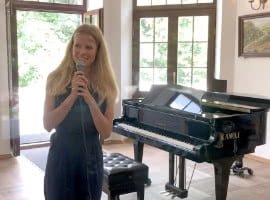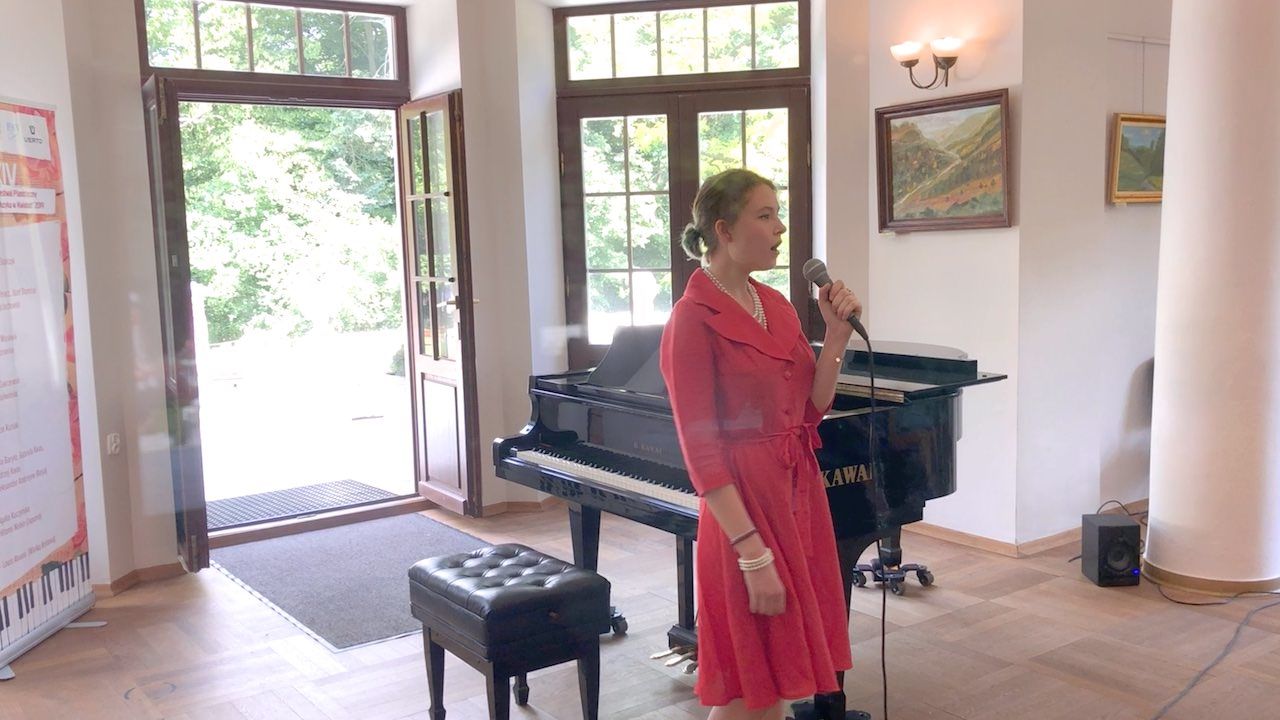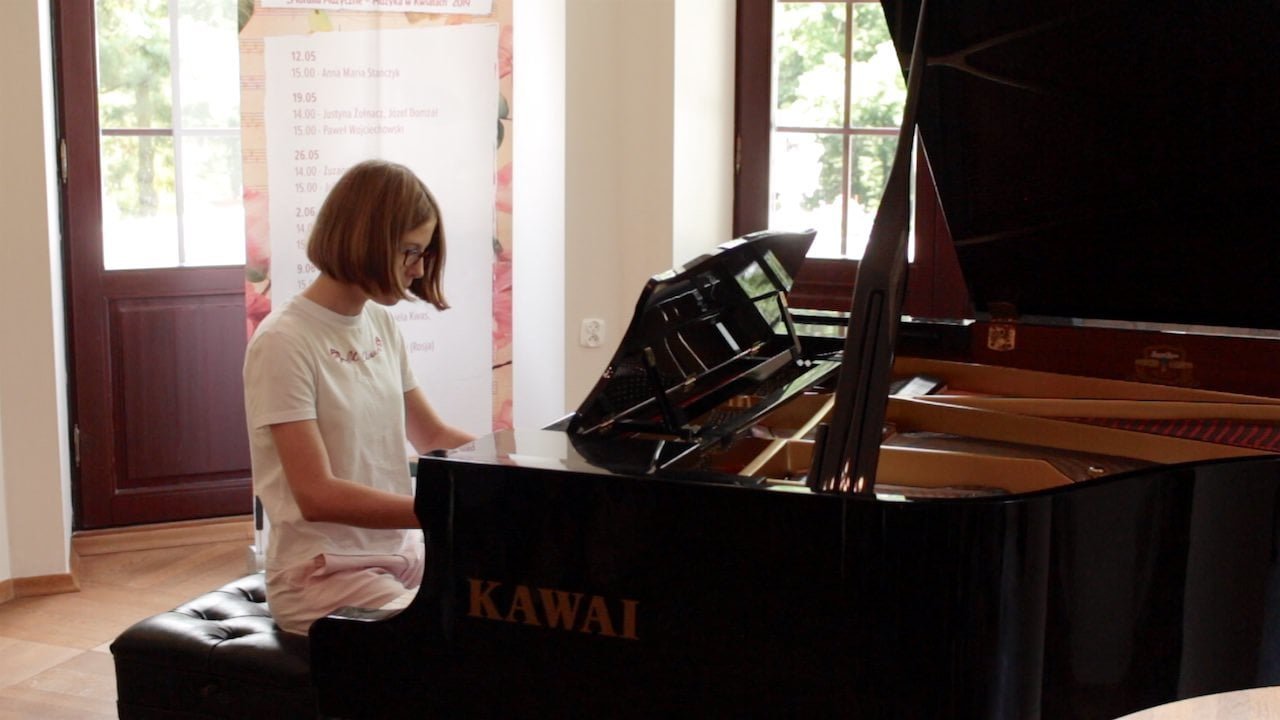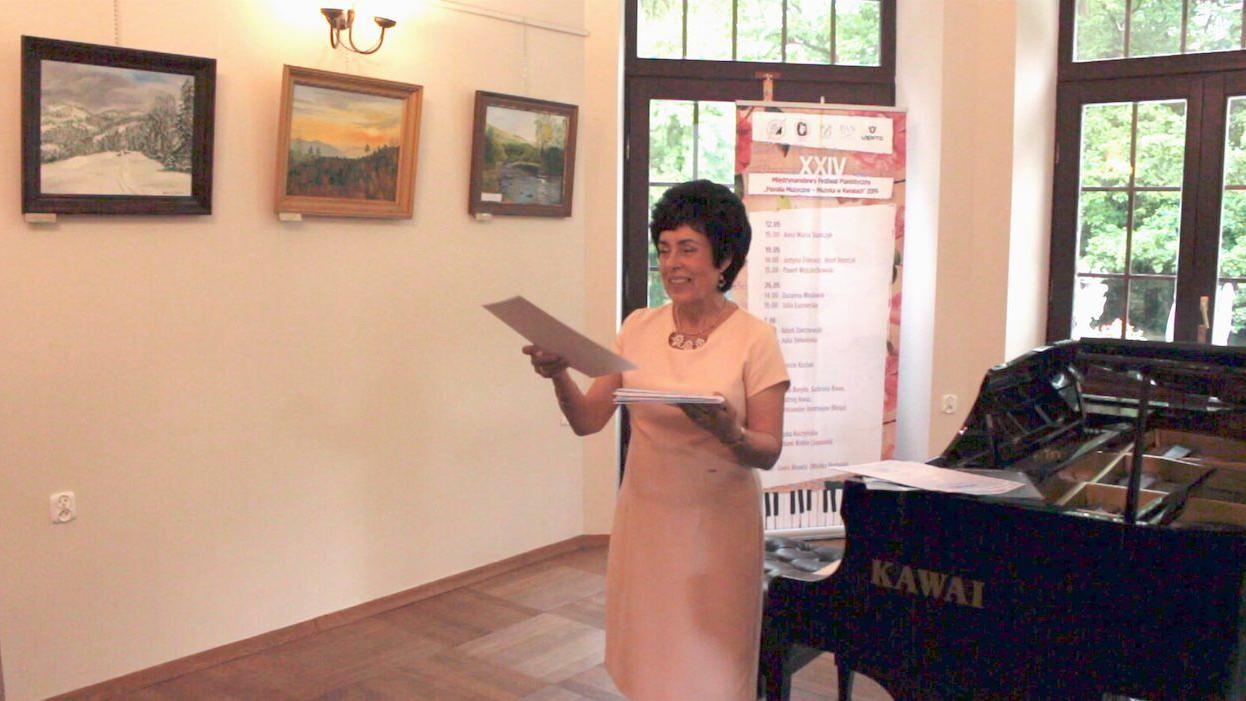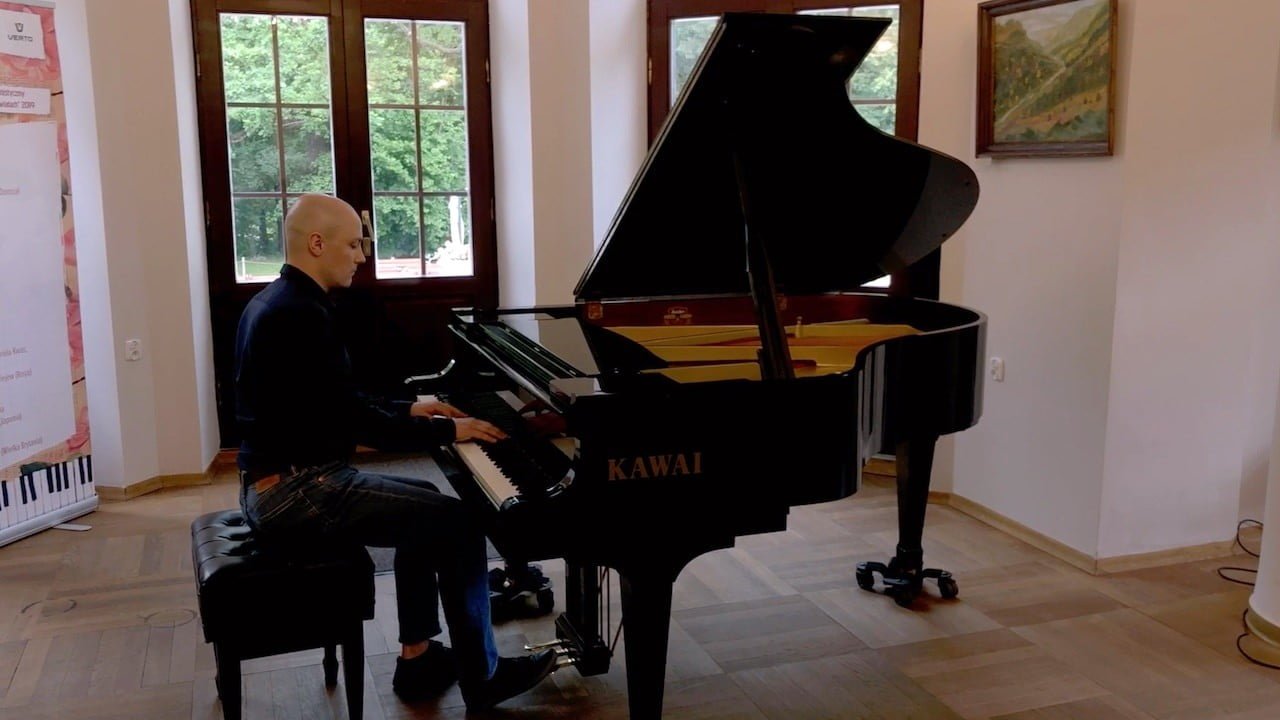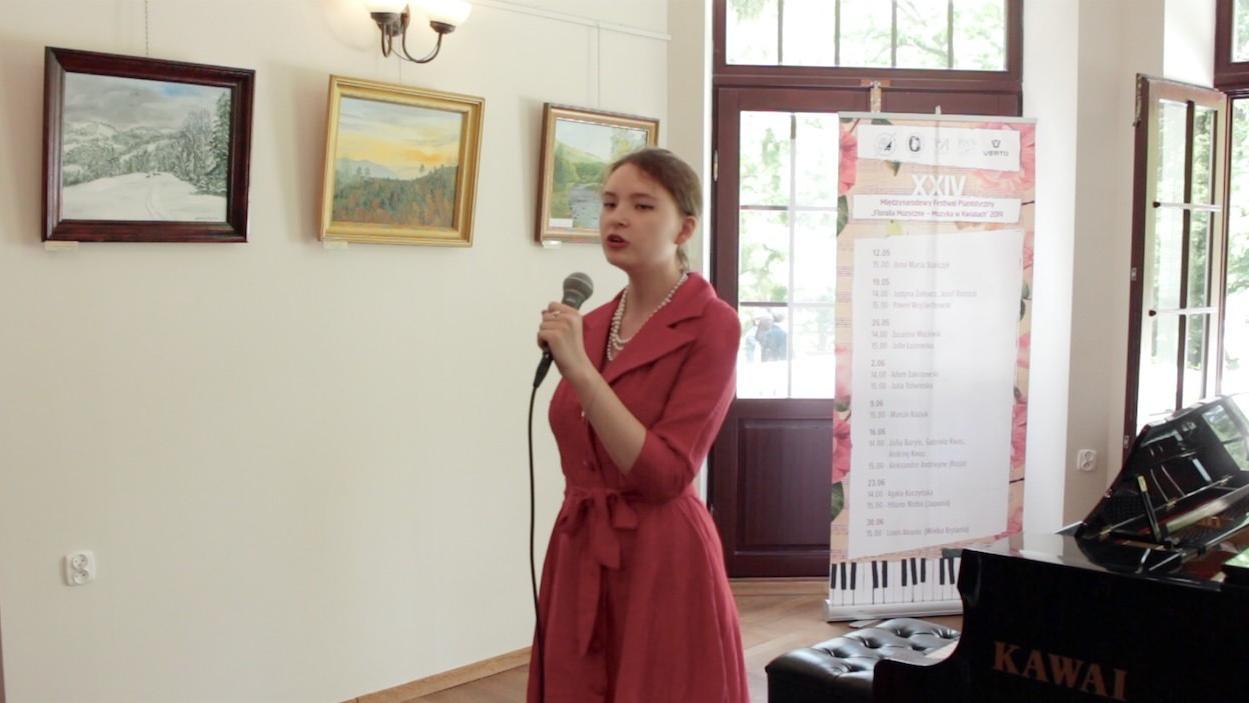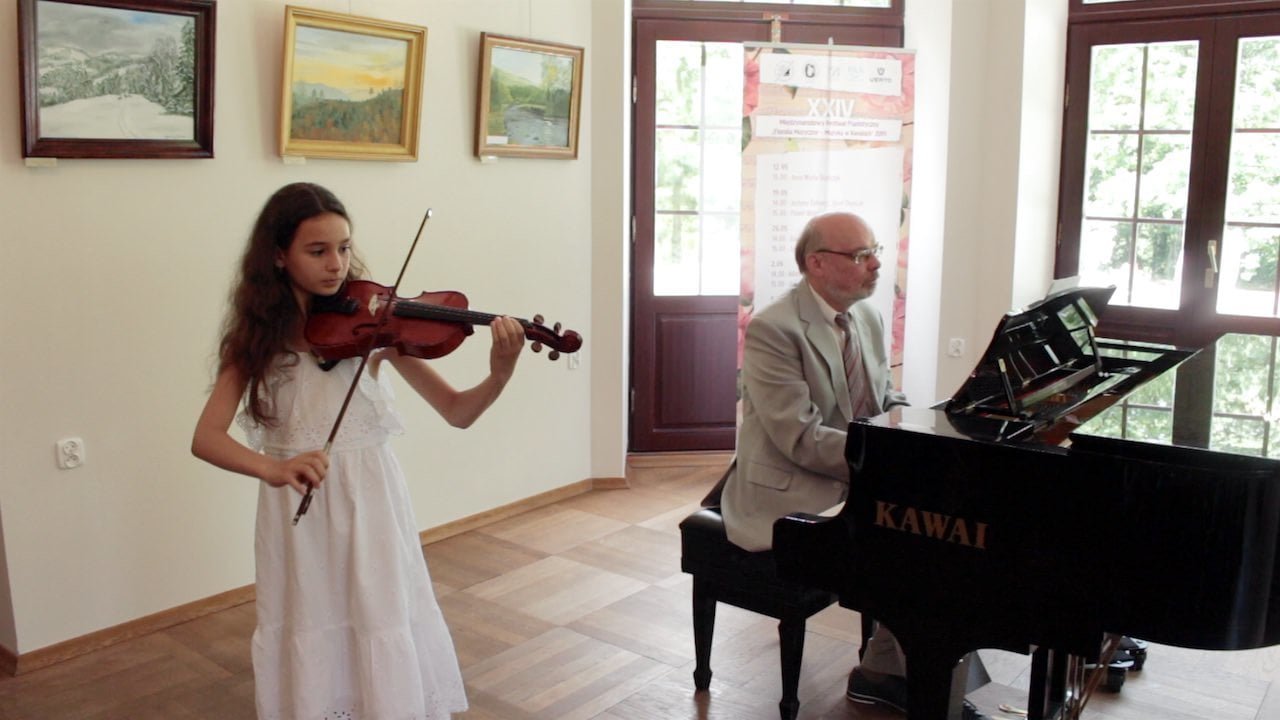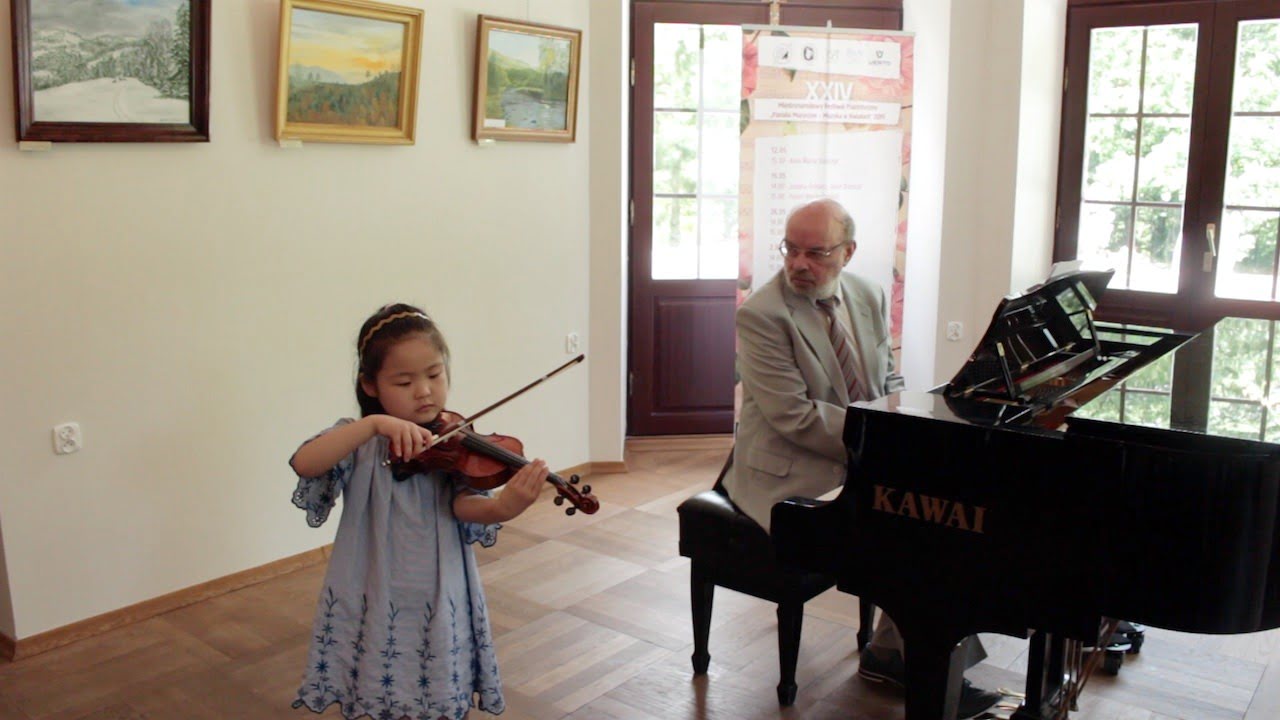Concert where all students perform their main pieces.
A grand concert is a music school concert where all of the students have the opportunity to perform their main pieces. These concerts are large-scale events that showcase the talents and achievements of the students and provide a platform for them to share their music with an audience. Grand concerts can be a great opportunity for students to showcase their skills and accomplishments, after year of training. They can also be a great way for students to share their music with their peers, teachers, and the community, and to celebrate the end of the tuition year.
The Music School Grand Concert is more than just a showcase of talent; it’s an ensemble of dreams taking flight on stage. Students, regardless of age or level, take the stage with anticipation in their eyes as they deliver performances that resonate with passion and dedication. The spotlight dims over one performer only to shine on another – a melodious cycle that reflects how growth is synonymous with learning at our school.
Every strum, beat and note played by each student is infused not only with musical knowledge, but also with their personal stories and experiences leading up to this climactic event. The intensity of this annual concert highlights how these young musicians have honed and mastered their core pieces throughout the year – it’s a testament to their hard work, resilience and love of music. This grand showcase transcends traditional performance boundaries by fostering solidarity between students from different backgrounds, united by a common thread – music!
Time of our students
In this passing school year 2018/2019 our teachers gave two teacher-concerts while our students gave six student-concerts.
Shortly before the Annual Concert our students which was held in the beautiful Concert Hall of the Fangor Mansion in the Botanic Garden of the Polish Academy of Sciences in Powsin a group of our students who were preparing themselves for the international ABRSM exams gave on June 23rd a concert at the Sadyba Center for Cultural Education in Warsaw. These students were: Jan Piwoński, Karolina Kowalska, Barbara Sobka, Madeleine Hojer and Michał Kotas. In addition, this was for them an excellent opportunity to test their form ahead of the coming international exams.
The Annual Concert 2018/2019 was held on June 8th 2019. From the very beginning of the Concert we could feel among our students a joyful and inspiring atmosphere in the concert hall. Besides the students enjoyed the possibility to present the effects of their musical education and the audience applauded warmly all performers.
Performances
The students of Alicja Zdrojewska vocal class opened the concert:
- Henryk Wawrzyński sung New York, New York – a song known from Frank Sinatra rendition;
- Amelia Jednacz performed Time After Time, a song from the repertoire of Ella Fitzgerald;
- Karolina Kowalska did Frim Fram Sauce a song from the repertoire of Nat King Cole;
- Ola Kmiecik performed Cry Me a River by Arthur Hamilton.
From Yuliya Leviuk class of piano played:
- Giorgio Gallerani performed Mali piraci (Little Pirates) by Agnieszka Lasko ;
- Kamila Budkiewicz did Walczyk na niepogodę (Little Waltz for the Bad Weather) by Agnieszka Lasko;
- Maja Myczyńska played Taniec z pieśnią (A Dance with the Song) by Aleksej Parusinov;
- Basia Sobka performed Waltz in d-minor by Dimitr Kabalevsky;
- Victor Poilpot played Prelude in C-Major by Eugene Tetzel;
- Karolina Kowalska performed Arabesque by Friedrich Burgemueller;
- Ola Dweyer presented Branle de la Torche by Michael Praetorius;
- Madeline Hojer played Etude in G-Major by Jean Baptiste Duvernay and Taniec niemiecki (German Dance) by Ludvig van Beethoven;
- Karolina Kowalska did Arabesque by Friedrich Burgemueller;
- Jaś Piwoński played Sonatina in a-minor by Georg Benda and Holiday in Paris by William Gillock;
- Ola Kmiecik performed Bagatelle in g-minor by Ludvig van Beethoven;
- Michał Kotas played Minuet in Es-Major by J.B. Loillet.
Krzysztof Komarnicki class of guitar:
- Edoardo Gallerani, who presented Andantino in G-Major by Matteo Carcassi;
- Achille d’Orgeval did Etude in a-minor op. 60 no. 7 and Masquerade & Dance by Matteo Carcassi.
The students of Zofia Zwolińska class of violin were:
- Avril Lange who played Allegretto by Wolfgang Amadaeus Mozart;
- Inez Chavrie performed Minature by Jean Baptiste Lully;
- Angeline Tworek played Allegretto by Wolfgang Amadaeus Mozart;
- Haruka Shimizu performed Romance by Charles Dancla;
In fact at the end of the Concert Natalya Voloshyna and Ella Bai bravado performed the famous virtuoso Concert in d-minor For Two Violins, BWV 1043, by Johann Sebastian Bach. Furthermore this concert was played at encore in Fangor Mansion in order to continue the old tradition of the violin masters who showed this way their respect to that magnificent masterpiece.
Moreover, Krzysztof Komarnicki announced the performers.
In conclusion, after the Concert Zofia Zwolińska, Director of the Music Academy, congratulated all soloists and their teachers the effects of their hard work and best results achieved during the entire school year and wished them all good luck and happy vacations.
So see you all in good shape in the new school year in September 2019. Now let’s dive into different composer figures.
Students learn to perform
The Music School Grand Concert is not just an event, it is a vibrant journey where every note played tells a story of hard work, determination and the joy of learning. It’s a unique opportunity for budding artists to make the transition from student to performer. These young talents don’t just learn how to manipulate strings or keys, they learn how to win hearts through their enchanting symphonies.
Nothing compares to the anticipation that builds within each participant as they prepare for this triumphant annual showcase. The stage could be either their podium of glory or a platform to reveal areas for improvement – both valuable outcomes in their musical pursuits. Whether it’s mastering Mozart’s Symphony or creating original compositions, these students are transformed into masters at our grand concert! We dare say that even Beethoven would stop composing and start applauding at these performances!
All eyes are on the Grand Concert, an event that transforms the routine of any music school into a glorious symphony of harmony and lifelong lessons. It’s not just a concert – it’s an enriching platform where students learn to perform under the spotlight despite nerve-wracking jitters, making it more than just another academic exercise.
The grace of piano notes intertwined with the soulful strumming of guitars and the crescendo of percussion combine to create a spectacle: The Grand Concert. But behind this enchanting show lies a world where learning takes centre stage. It’s not just about standing ovations or encores; it’s about facing fears and growing in confidence with every string plucked or note struck.
In this hallowed hall of sound, students are not just performers, but are transformed into tenacious artists, embracing vulnerability as they discover their unique soundscapes. The Grand Concert represents more than melodic rhythms and finely tuned instruments; it symbolises courage, dedication, unity in diversity – all essential facets that are imbibed during the journey of learning to perform.
Classical music during our Grand Concert
Immersing oneself in the classical music of a school concert is like entering a timeless world, where every note resonates with centuries of tradition and historical richness. The sonic landscape painted by these young musicians transforms the familiar school rooms into an enchanting concert hall, echoing not only the melodious strains of Bach or Mozart, but also the dedication of the teachers and the countless hours of practice by the students. These great concerts reflect more than just musical prowess; they also symbolise our shared cultural heritage, handed down from generation to generation.
Shedding light on this deeper level provides an incredible twist to understanding a School Grand Concert. It underlines that such performances are not simply gatherings for parents to show off their child’s talent or structured curricular necessities. Rather, they are bridges that connect the musical virtuosos of yesteryear to the scholars of today sitting behind the music stands – passionate torchbearers bringing timeless pieces of classical music to life for a wide-eyed audience. It is from this perspective that the melodies from the strings or keyboard are appreciated all the more, and it shows how a school concert sows the seeds of admiration for a rich classical heritage in young hearts.
Music of Matteo Carcassi
Matteo Carcassi was a 19th century Italian composer and guitarist, known for his contributions to the classical guitar repertoire. He was a highly skilled performer and composer who wrote a number of works for the guitar that are still widely played and studied today.
Carcassi’s music is characterised by its technical demands and virtuosity, as well as its expressive melodies and beautiful harmonies. He composed a wide range of works for the guitar, including etudes, preludes and other solo pieces, as well as duets and other ensemble works.
Carcassi’s music has had a lasting influence on the classical guitar repertoire and has inspired many subsequent composers and performers. It remains an important part of the classical guitar repertoire and is widely studied and performed by guitarists today.
Overall, Matteo Carcassi was a 19th century Italian composer and guitarist known for his contributions to the classical guitar repertoire. His music is characterised by its technical demands and virtuosity, expressive melodies and beautiful harmonies, and remains an important part of the classical guitar repertoire today.
Music of Friedrich Burgemueller
Friedrich Burgmüller was a 19th century German composer and pianist, best known for his contributions to the classical piano repertoire. He was a prolific composer, producing a large body of work that includes a wide range of piano pieces as well as chamber music and vocal works.
Burgmüller’s music is characterised by its technical demands and virtuosity, as well as its expressive melodies and beautiful harmonies. He composed a wide range of works for piano, including etudes, preludes and other solo pieces, as well as duets and other ensemble works.
Burgmüller’s music has had a lasting influence on the classical piano repertoire and has inspired many subsequent composers and performers. It remains an important part of the classical piano repertoire and is widely studied and performed by pianists today. His music is characterised by its technical demands and virtuosity, expressive melodies and beautiful harmonies, and it continues to be an important part of the classical piano repertoire.
Music of Dimitr Kabalevsky
Dimitr Kabalevsky was a 20th century Russian composer and pianist, known for his contributions to classical music and his commitment to education and social causes. He was a prolific composer, producing a large body of work including symphonies, operas, chamber music and piano works.
Kabalevsky’s music is characterised by strong emotional expression, bold and colourful harmonies, and energetic and rhythmic drive. His works often have a folkloric quality and are inspired by Russian folk music and literature.
Kabalevsky was also a passionate advocate of music education and believed in the power of music to bring people together and promote social and cultural understanding. He was actively involved in the music education movement in Russia and served as director of the Moscow Conservatory for many years. His contributions to classical music and his dedication to education and social causes. His music is characterised by strong emotional expression, bold and colourful harmonies, energetic and rhythmic drive, and is inspired by Russian folk music and literature.
Music of Wolfgang Amadaeus Mozart
Wolfgang Amadaeus Mozart was an 18th century Austrian composer and musician who is widely regarded as one of the greatest composers in the history of classical music. He was a prolific composer, producing a vast body of work that includes over 600 works in virtually every genre of his time. A musician known for his extraordinary beauty, technical mastery and emotional depth. His music has had a lasting influence on classical music and is widely regarded as a model of musical excellence.
Mozart’s music is renowned for its extraordinary beauty, technical mastery and emotional depth. His works are characterised by elegant and graceful melodies, sophisticated harmonies and structural clarity. He composed in a wide range of genres, including symphonies, operas, chamber music, piano works and choral music.
Mozart’s music has had a lasting influence on classical music and has been widely performed and recorded by musicians around the world. He is considered a pioneer of the classical style and a model of musical excellence.
Music of Ella Fitzgerald
Ella Fitzgerald was an American jazz singer and songwriter widely regarded as one of the greatest singers of all time. She had a long and successful career spanning over six decades and became known for her exceptional vocal range, phrasing and interpretive skills.
Fitzgerald’s music is characterised by her rich and expressive voice and her ability to interpret and improvise on a wide range of material. She sang a variety of styles, including jazz, blues, pop and Broadway standards, and was known for her ability to bring a unique and personal touch to each song she sang.
Fitzgerald’s music has had a lasting influence on jazz and popular music, and she continues to be celebrated and revered as a pioneer and icon of the genre. Known as the “First Lady of Song”, she has been inducted into the Grammy Hall of Fame and the National Endowment for the Arts Jazz Masters Hall of Fame.
She is renowned for her exceptional vocal range, phrasing and interpretation. Her music, characterised by her rich and expressive voice and her ability to interpret and improvise on a wide range of material, has had a lasting influence on jazz and popular music.
